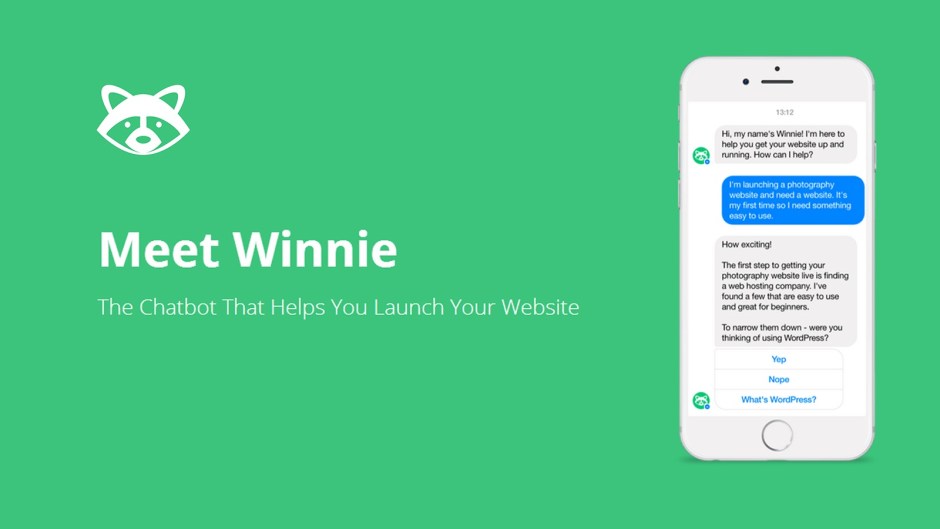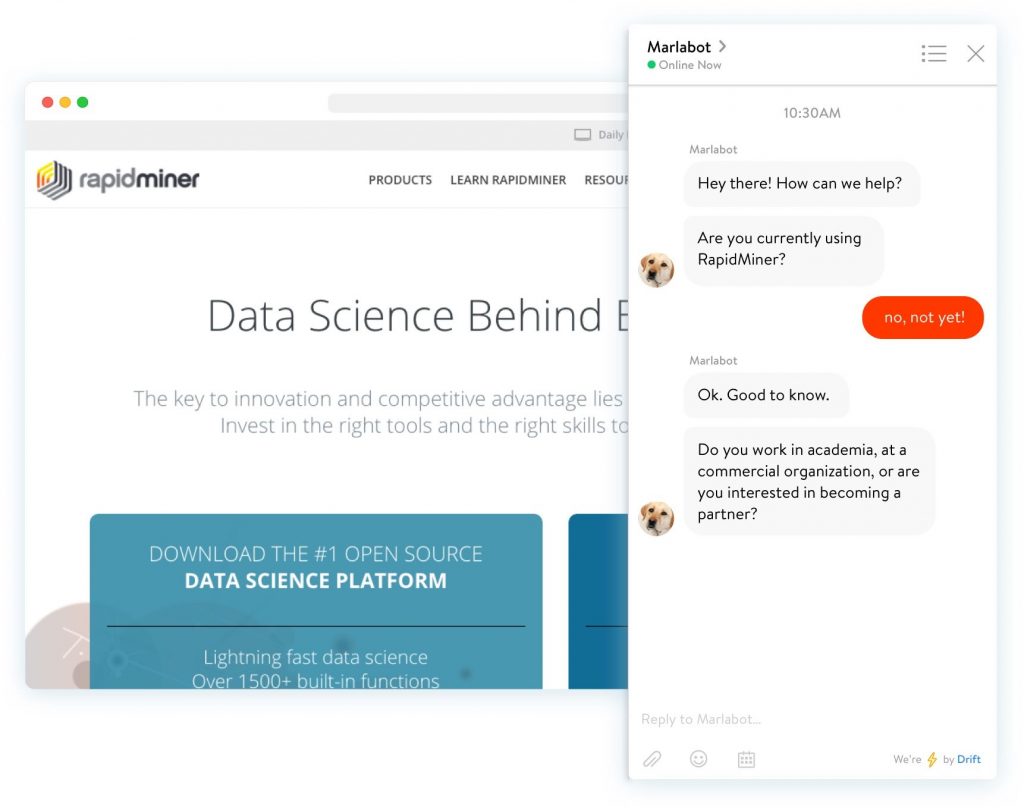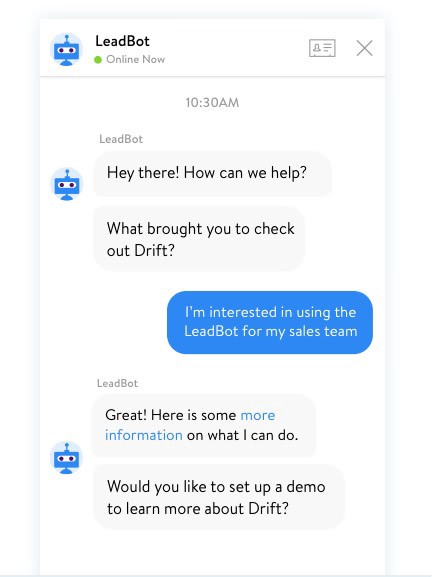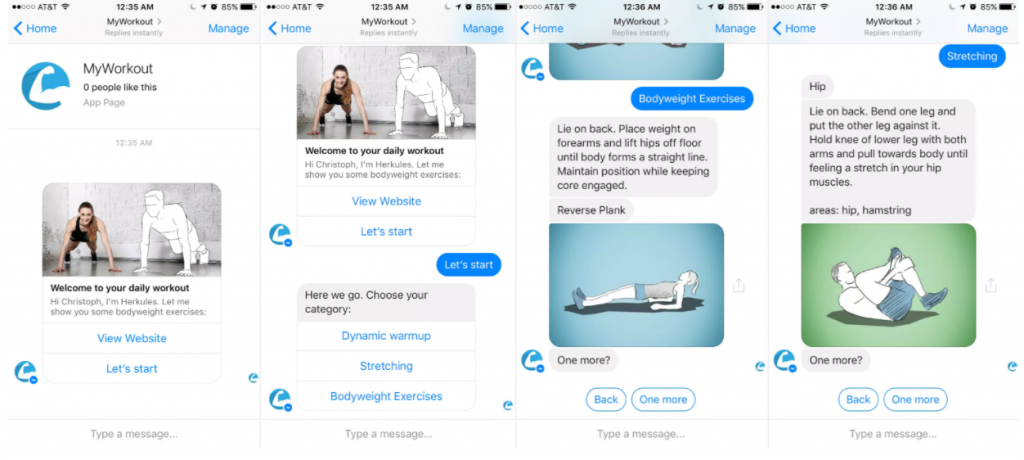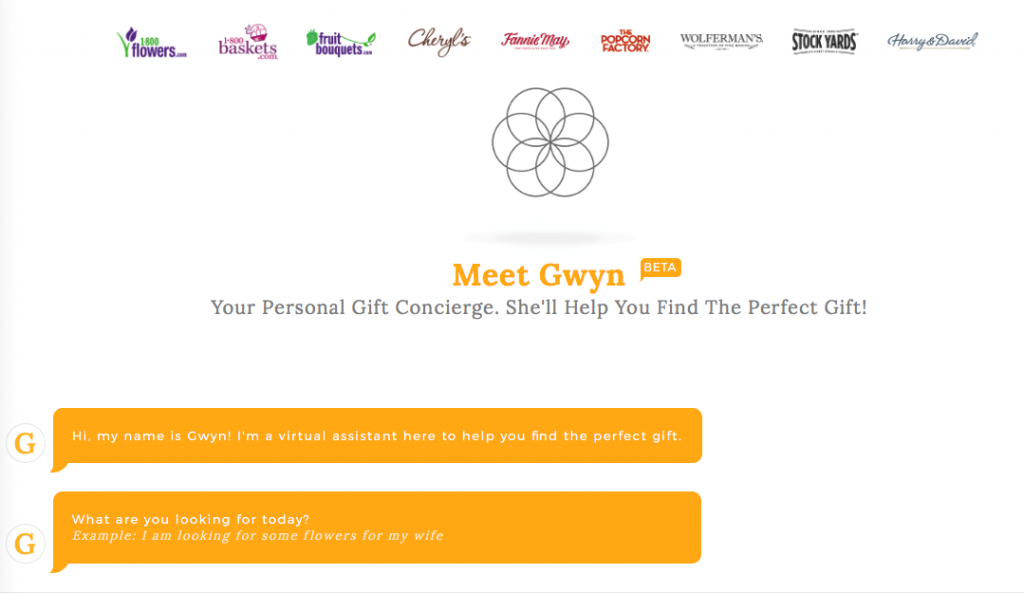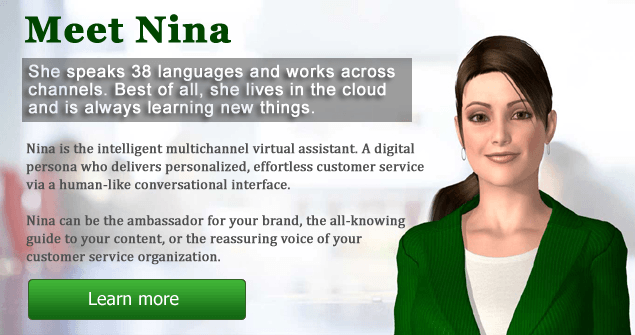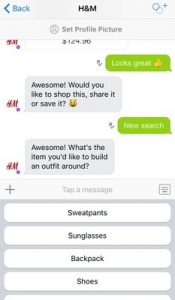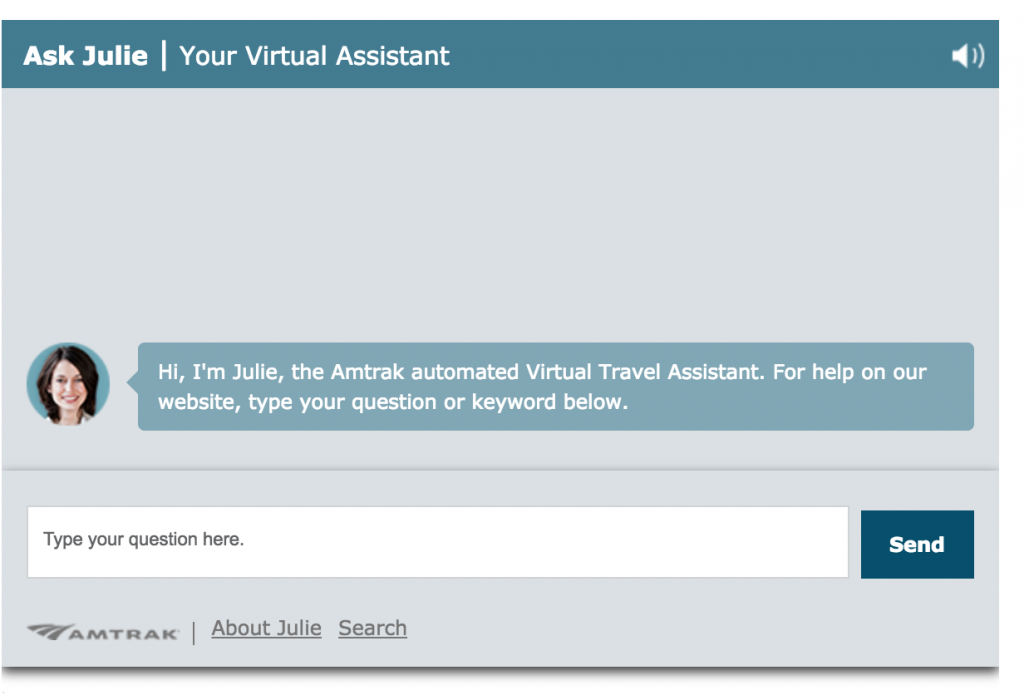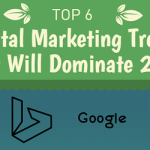
CHATBOTS
With technology growing every day and modern trends taking over digital world, humans want things done as quick as possible. One of such expectation is instant responses to queries and complaints.
To solve this issue the future of marketing will require chatbots.
As the number of users for texting applications are growing three fold. With this trend,
virtual chatbots that imitate human conversations for solving various tasks are becoming increasingly in demand. So the use of chatbot will soon be a dominant trend in business world
Online chatbots save time and efforts by automating customer support. They are also used for other business tasks, like collecting information about users, helping to organize meetings among others.
What is a Chatbot?
The word chatbot is short version of chat robot, which is a Ai based computer program which conducts a conversation via auditory or textual methods in real time interaction with users or customers of a company.
A chatbot serves the purpose of a human conversational partner and provides proactive assistance to users and replace the necessity of human communication to provide responses to question from customers.
It is an assistant that communicates through text messages, a virtual companion that integrates into websites, applications or instant messengers and helps entrepreneurs to get closer to customers.
Why Chatbots?
Chatbots have gained a massive importance in business in recent years and companies from a range of industries are turning an eye towards this alternative way of communication. Behind the curtain, the bot is leading you through a series of dependent questions to collect the necessary information to understand your intent, and then deliver the right content to satisfy your needs.
Let’s look at five reasons why businesses will need chatbots in 2019!
- Reducing operational costs
With competition growing every year across most industries, among the top objectives of companies will be the reduction of expenses. Implementing chatbots as part of your business strategy can bring savings of up to 30% as shown by reports from Chatbots Magazine.
The reductions are mainly provided by eliminating the investment in employees or agents, tasked with the role of responding to queries 24/7, 365 days of the year. In addition, in order to provide relevant and useful information to inquiries, human employees will need to be trained for a certain amount to time and will require upgrades to their knowledge base when necessary.
With a chatbot, once the information has been entered into the data pool that is used, it is available at all times and can be easily changed.
- Better User Engagement
In order to create loyal customers, a brand must communicate in a way that provides top user engagement on all levels. Customers are often put off by long and irrelevant conversations with agents, who sometimes fail to comprehend the given inquiry.
The use of chatbots reduces the risk of this scenario as the “robots” will always interpret the given information by the customer, one step at a time. Chatbots’ responses will, therefore, be entirely related to the information that the user has provided and will avoid emotional responses typical for a human.
- Trendy Business
Regardless of the area of your business, customer interaction is essential. Research reveals that in the last couple of years, messaging applications and the social network had an equivalent role in reaching users.
Customer behavior has shown that chat is a preferred form of communicating with a company as it is free, quick, and easier than making a phone call or visiting a store or office physically. Research also shows that most smartphone users are not likely to download new apps very often and prefer using known platforms such as Facebook or Instagram. This opens an opportunity for businesses to integrate a chatbot into their Facebook page, for example, and establish a true bond with their customers.
Chatbots are turning into a must have and soon, companies who have failed to see this will be perceived as outdated.
- Understanding customers better
Although the major role of chatbots is to communicate with users, this is not where their capabilities end.
Chatbots can effectively be used to collects valuable data and insights on high or low performing pages of your website, for example. They can also be used to collect information from customers. For example, your chatbot can start a conversation with a user from your landing page and ask them to fill out a quick survey to find out what they think about your brand, products, or services.
Marketing products become easier and more efficient with chatbots as they can also gather and analyze buying patterns and behaviors, providing useful product suggestions to customers.
- Opens up international opportunities
The best thing about chatbots is that they use information, which has previously been provided by a programming specialist and requires no additional investment for learning, not only business information but other languages, for example.
You can easily “train” your chatbot in becoming a polyglot and being able to have a conversation in different languages, making it extremely valuable for a business that operates in different countries. It will also eliminate uncomfortable situations of a human agent failing to acknowledge cultural differences associated with different parts of the world as the chatbot will always respond in a rational and information-based way.
Implementing AI backed chatbots in your business in 2019 will almost be a must, especially if you are striving to maintain a modern and technologically advanced business model.
What are types of Chatbots?
Scripted chatbots: Interactions with this sort of chatbot can only follow predetermined ways. At every step within the conversation the user will need to pick from bound options to determine the next step in the conversation. How the options are presented to the user at every step in the conversation can depend on the options of the chat platform and the way the bot is programmed that the user is on and also the style of the bot.
Intelligent chatbots:
These ones are additional flexible in terms of the user input they will settle for. They can settle for free form input in the form of text or voice statements. However, it’s very difficult to get a bot to “understand” context or ambiguity or to have a useful memory that influences the conversation.
Application chatbots:
These concentrate primarily on showing the user whatever is needed graphically. If a user can do the job they need to do more efficiently via a graphical interface then the bot shows a graphical interface at that point in the conversation.
How a Chatbot works?
Chatbots are programmed to figure independently from a human operator. They come with a detector through a combination of predefined scripts and machine learning.
When a question is asked, the Chatbot can answer based on what it knows. If it doesn’t understand what to try to to, it passes the question to a personality’s operator.
The quality of the chatbot is set by a sophistication of its underlying software system and also the knowledge it will access. Over time and over multiple interactions, the Chatbot can gradually gain in scope and relevance.
Where to use Chatbots?
Chatbots can be used in various occasions. Here are a few examples of wherever to use Chatbots.
Ordering. This can be done by texting, tweeting, voice, among others so long as the service supplier offers support for chatbots. For example once using Amazon, Alexa could be a nice asset in making orders.
- Product Suggestions
Customers would possibly need to shop for some merchandise, however won’t have a selected item in mind. Chatbots are often used to supply product suggestions based on what they require, that is; color, style, brand, among others.
- Customer Support
Brands like AirBnB, Evernote, and Spotify among others use chatbots on Twitter to provide 24/7 client service. This helps to quickly offer answers and address client complaints, or just track the status of an order.
- Weather Forecasting
You can use these to ask about the current weather conditions in your area and find out whether you should bring the umbrella before you leave for work. Some truly enable you to line regular reminders for a particular time of day.
- Personal Finance Assistance
Chatbots build it simple to form trades, get notifications regarding exchange trends, track your personal finances, or even get help finding a mortgage. Various banks have chatbots to allow you to sign on on your account, such as your current balance and most recent transactions.
What are Platforms on which you can use Chatbots?
1: Winnie
It is a chatbot designed to assist web site owners build better decisions about which hosting supplier to travel with. Getting the foremost appropriate hosting supplier and package for your desires are often one amongst the foremost frustrating things regarding obtaining a web site up and running.
Winne helps users narrow down their selections, supported the type of web site they’re setting, up and points them in the direction of suitable providers hosting packages. Since the bot first opened on Facebook Messenger, it has achieved an incredible 72% CTR of users clicking through to an affiliate hosting provider.
2: RapidMiner
RapidMiner electoral Leadbot – a “sales assistant” .
Visitors are greeted by the friendly MarlaBot, who gets the conversation rolling in moments after you land on the company’s website. However, MarlaBot isn’t alone.
RapidMiner sales staff are brought into the loop as soon as Marla gets an answer, at which point they start monitoring the conversation to see where they should to jump in.
Meanwhile, Marla is aggregation all the information she desires from her interactions to create a additional relevant expertise for every user.
According to the company the bot, in many cases, is capable handling the entire conversation by itself and people regularly thank the Marla when they’re done.
There’s heaps of point out the flexibility ofchatbots to carry significant conversations with users, but RapidMiner and Leadbot show its a question of how you implement the technology into the buying journey.
3: Instant Translator
Instant Translator was originally designed as a demo to point out corporate people what chatbots are capable of. Despite its modest intentions, it soon became the biggest translation bot on Facebook with more than a million users.
The team behind it was focused on making the most effective platform they presumably could for the people using Instant Translator.
Back then, it had been solely capable of translating from English to Arabic and Arabic to English. However, Instant Translator currently supports nineteen languages and it’s not done yet. The bot is out there on Facebook messenger and Viber with more than 600k active monthly users. It currently translates around 300k sentences every day.
An incredibly simple platform that makes a constant effort to expand and improve for its users now has enough momentum to grow sustanibily.
4: RewardStream
RewardStream additionally took the Leadbot approach and it accounted for 30 minutes of their converted leads in the initial forty five days. Now RewardStream builds platforms that facilitate companies encourage their existing customers to refer friends – largely for enterprise businesses.
The software company was doing everything right on the digital promoting front: generating traffic, engaging content, effective paid advertising and a solid email marketing strategy. Except there was a problem: RewardStream wasn’t changing enough of these leads into customers.
So the company decided to take a position in a chatbot that might have interaction with those guests at the opportune moment. And the company found its new Leadbot steady giving a higher range of leads
conversions.
5: MyWorkout
In fairness, this bot doesn’t really fit into the B2B or B2C brackets, but it’s a perfect example of how to design a simple bot that captures attention.
MyWorkout aims to create working out easier and additional accessible to everyone by taking users through every step with directions and custom illustrations. It’s an easy enough idea however the conversation style and visual content really turn this basic idea into one thing really engaging. Instead, they target giving users what they require among one or two of clicks.
5 Case studies which show how well bot worked
1. Expensify: “Concierge”
Company Description: Expensify software helps streamline and modify expense reports and travel arrangements for corporations across industries.
How it’s being used
- Concierge takes new users step-by-step through the setup process, and is designed to proactively trouble-shoot customer issues (for example, if the connection between a user’s credit card and Expensify is severed, the chatbot gives directions on a way to fix the affiliation before it becomes a problem)
- With access to real-time travel pricing, Concierge is able to notify users if they’re receiving the best valueConcierge can communicate with users on
- Expensify’s website or via mobile and is compatible with Slack (the cloud-based team collaboration tool)
Value proposition:
- In an interview with FastCompany, Barrett noted that Concierge has helped reduce banking problems by 75%, and that the website has quintupled the number of its free trials (Expensify has no shortage of big-name purchasers, which include Uber, Warby Parker, Virgin Hotels, and Quora, to name a select handful).
Key questions/takeaways:
Select quotes are borrowed from FastCompany’s interview with ceo David Barrett:
- Are there recurring customer service issues or problem areas in our business that would benefit from preventive interaction? CEO David Barrett expressed , “You don’t want to talk to the chatbot, you want something to happen with the minimum amount of interaction.”
- How might our business help customers make better and quicker decisions? Barrett advises keeping the programme simple: “People don’t wish additional practicality, they have already got an excessive amount of practicality. The most trendy applications these days are concerning having less UI, a single button that does a tremendous amount…”
2.1-800-Flowers: “GWYN”
Company description: A floral and gourmand foods gift retailer and distribution company and one among the primary businesses to use telephone and net for direct sales.
How it’s being used:
-
- GWYN is a product of IBM’s artificial intelligence system, Watson, and is based on the Fluid Expert Personal Shopper (XPS) software platform); the chatbot helps consumers search for and place their gift order online
- GWYN becomes smarter as “she” interacts with more customers over time; the eventual goal is to offer a customized shopping experience based on a user’s past buying behaviors
- Using natural language, GWYN interprets customer questions about a product or service; “she” can then follow up with additional questions about the intended audience, occasion, and sentiment in order to suggest best-fit gifts for a particular customer
- Value proposition:
1-800-Flowers’ 2017 first quarter results showed total revenues had increased 6.3 percent to $165.8 million, with the Company’s Gourmet Food and Gift Baskets business as a significant contributor. - CEO Chris McCann expressed, “…our Fannie May business recorded positive same store sales as well as solid eCommerce growth, reflecting the success of the initiatives we have implemented to enhance its performance.” While McCann doesn’t go into specifics, we assume that initiatives include the implementation of GWYN, which also seems to be supported by CB Insights’ finding:
- 70% of customers ordering through the chat bot were new 1-800-Flowers customers as of june 2016.
Key takeaways:
- How can we encourage additional customer purchases while they shop? Train a system to “read a customer’s mind” by gathering key info points and intuiting complimentary products and services. Use chatbots to assist modify the customer expertise and invite come purchases, increasing customer lifetime value.
3.LV=Broker: *“aLVin”
Company description: LV= is a UK-based supplier of financial product and services; its LV=Broker division offers a range of range of business and private lines product for third-party brokers.
How it’s being used:
aLVin is made on the foundation of Nuance’s Nina, the intelligent multichannel virtual assistant that leverages language understanding (NLU) and cognitive computing capabilities. aLVin interacts with brokers to higher understand “intent” and deliver the proper data 24/7; the chatbot was engineered with intensive information of LV=Broker’s products, that accelerated the process of being able to answer more queries and direct brokers to the right products early
-
- aLVin’s live chat service overlaps when needed with human support representatives. Over time, LV= envisions AN a lot of collaborative relationship between the virtual assistant and the human support agents, which will help increase the number of transactional tasks that aLVin can assist with and permit service agents to handle a lot of complex tasks
Value proposition:
Select quotes are borrowed from Computing’s interview with Head of personal Lines Operations Alan Hickman.
- Alan Hickman noted that after the pilot, 98 per cent of brokers said that they would use the service if offered full-time.LV= also benefitted as a larger company.
- According to Hickman, “Over the (trial) period, the volume of calls from broker partners reduced by 91 per cent…that means is aLVin was able to provide a final answer in around seventy per cent of conversations with the user, and only 22 per cent of those conversations resulted in [needing] a chat with a real-life agent.”
Key takeaways:
- How can our business streamline tasks for professionals in a target industry? LV=’s Broker division needed to be ready to deliver important data conveniently to brokers 24/7.
- Are there areas where we could automate simpler customer requests (frequently asked questions/tasks) and reserve human capital for more sensitive or complicated demands?
4. H&M: The Official H&M
Company Description:H&M may bea global fashion company that promote sustainable materials and human labor
How it’s being used:
-
- The purpose of H&M’s chatbot is to help mobile customers navigate their search through outfit possibilities and guide you to the online store areas that align with your purchase desires.
- H&M’s chatbot leverages the following information and responds differently based on provided information:
o Defines your gender and style
o Suggests outfits and the total price for all items
o If you dislike the suggested outfit, the chatbot will select a different outfit
o If you like the outfit, the chat provides some options: shop – direct link to the H&M internet shop; save – archive your outfit; share – via social networks, email, etc.; next outfit – provides a new outfit suggestion
Value proposition:
- H&M’s consistent increased sales over the past year and its August announcement to launch an eCommerce presence in Canada and South Korea during the fall of 2016, along with 11 new H&M on-line markets (for a complete of thirty five markets by the end of the year), seem to suggest positive results for its chatbot implementation (though direct correlations square measure unavailable on its website).
Key takeaways:
How can our business leverage technology to better and more often engage younger audiences with our products and services? H&M is one of several retailers experimenting with and leveraging chatbots as a mobile marketing opportunity – according to a report by Accenture, 32 percent of the world (a large portion of the population twenty nine years previous and younger) uses social media daily and eighty % of that time is via mobile.
5. Amtrak: “Julie”
Company description:The National Railroad traveller Corporation (Amtrak) provides rail passenger services for customers in the forty eight contiguous U.S. states.
How it’s being used:
-
- Julie, a newer version of Amtrak’s original telephone-based customer service agent, is designed to guide users through Amtrak.com using natural language capabilities and a broad knowledge-base of the site
- In addition to responding through text, Julie can vocalize “her” answer alongside a written respons, Julie can provide or help customers find information on making a reservation, getting more information on Amtrak’s rewards program, finding station and route information, and a variety of other areas
Value proposition:
- According to nextIT (Julie’s product platform), implementation of Julie resulted in the following:
o 25 percent more bookings
o $1 million in customer service email costs saved annually
o 50 percent year-over-year growth in users’ engagement with Julie
o 30 percent more revenue (monthly average) generated per booking
Key takeaways:
- Is there a way to evolve or augment existing technology to make it more engaging and useful for customers? Instead of ditching Julie the telephone rep, Amtrak expanded “her” presence by implementing a more responsive chatbot.
- Do the nature of our services and size of our customer base warrant an investment in a more efficient and automated customer service response? How will we offer a a lot of efficient expertise without (necessarily) increasing expensive human resources? Amtrak’s web site receives over 375,000 daily visitors, and they wanted a solution that provided users with instant access to online self-service.
Conclusion
- There’s no downplaying what bots could do. For brands and consumers alike, we have a chance to redeem communication and commerce. Research would be convenient, purchases streamlined, and service personalized. But even as simply, we can transform bots from helpful to disruptive, wanted to unwanted.
- Don’t miss the opportunity here. By nature of what bots are, they offer a radical new reality. Bots are built to be helpful. They require a person to opt-in. And for the primary time, they encourage scalable, one-on-one conversations between brands and consumers.
- It’s the makings of a marketer’s dream: a world where brands can build authentic relationships with their buyers, and buyers will learn to trust brands once more.

